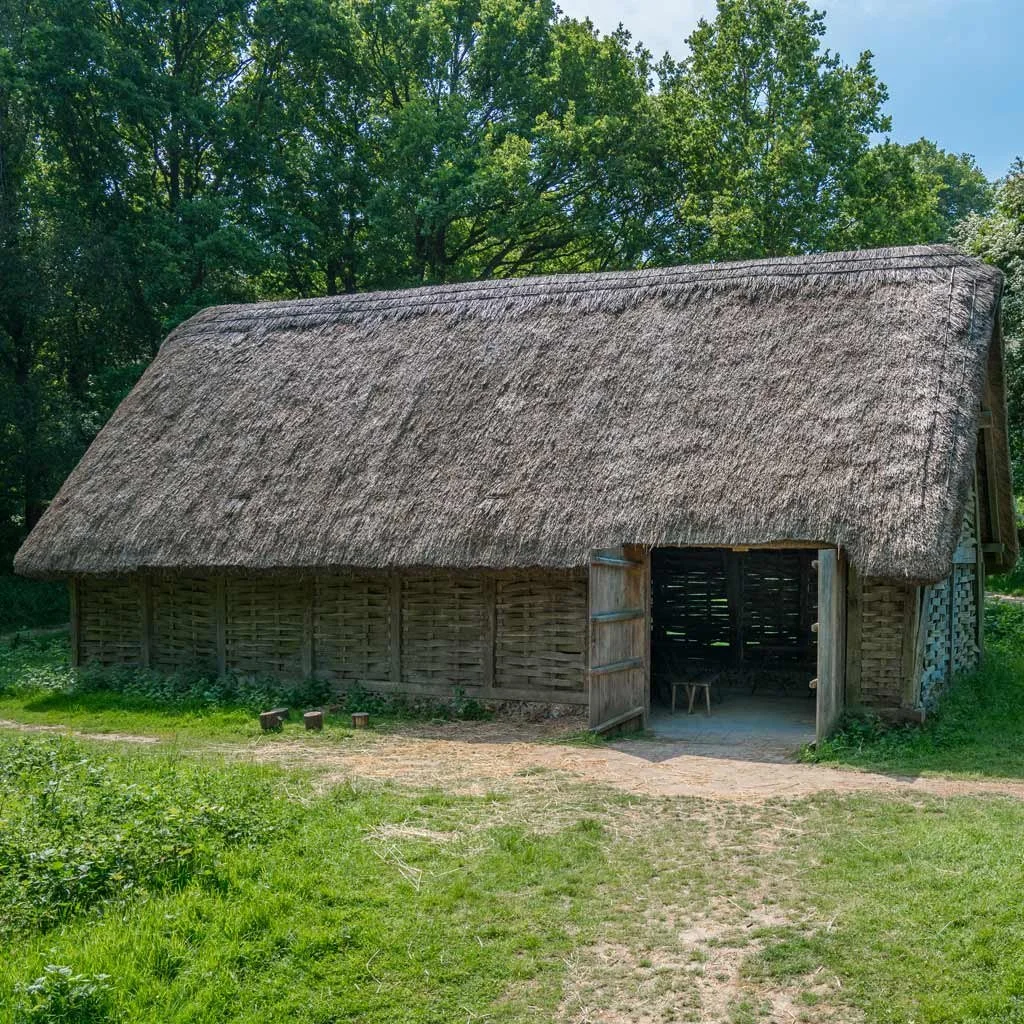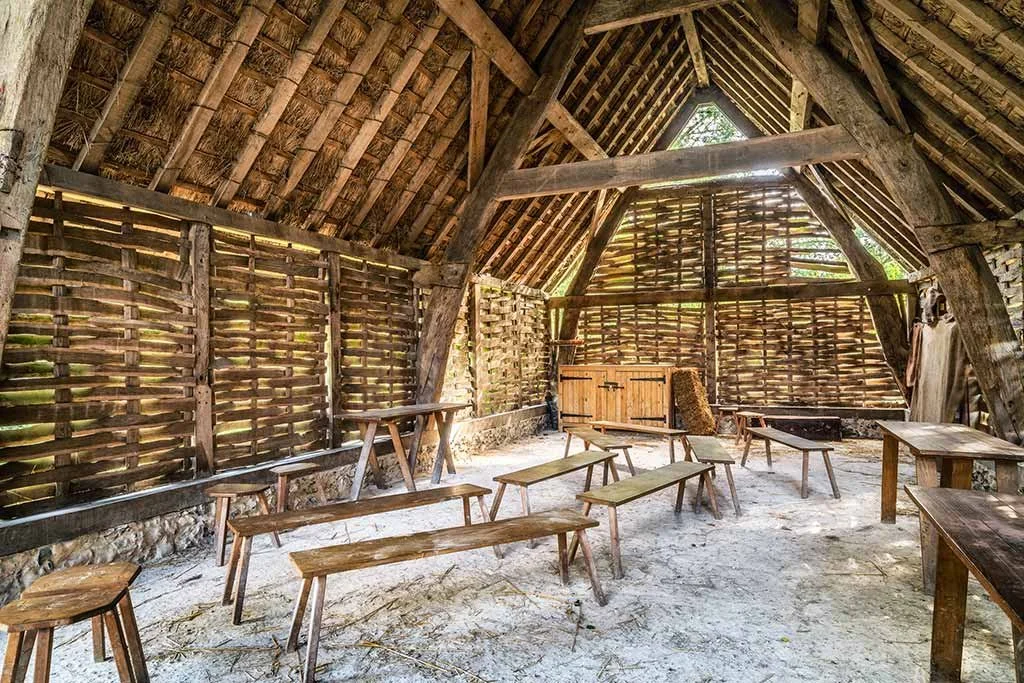A Tudor Cruck Frame Barn
Arborfield Barn is a cruck frame barn from the Tudor period, with a medieval-style thatched roof. It was originally used for storing food or keeping animals.
Arborfield Barn stands as a remarkable example of Tudor-era architecture, featuring a distinctive cruck frame and a medieval-style thatched roof. Initially employed for the storage of food or housing animals, this historical structure hails from Carters Hill Farm near Arborfield, Reading. Constructed around the year 1500, it showcases the enduring craftsmanship of an architectural style prevalent since the 13th century.
In the 1970s the Ministry of Agriculture decided that it could no longer be used because of its poor condition. The barn was dismantled in 1977 and rebuilt at the Museum in 1980.
The Story Behind the Arborfield Barn Building
Arborfield Barn's fascinating construction is a cruck-framed marvel that reflects meticulous craftsmanship.
The barn's roof and walls find support from four pairs of cruck blades, uniquely shaped beams crafted from a single split piece of wood. These curved timbers joined together with pegs featuring square spurs in round holes, contribute to the distinctive Cruck frame. Upright posts filled with split oak wattles form the walls, all constructed from sturdy oak timber. The barn rests on a flint plinth wall, adding to its structural integrity. Covered in a thatched roof made of wheat straw, Arborfield Barn showcases meticulous attention to detail. Notably, its entrance is situated in an end bay, deviating from the more common center-front wall placement. The absence of a rear wall doorway suggests a likely original purpose for storage rather than grain threshing.
Arborfield Barn on TV
The barn was used for filming Mary Queen of Scots (the scene where the two Queens meet), a wedding in the comedy television series Man Down, and a witch trial in the dark comedy Inside Number 9.


